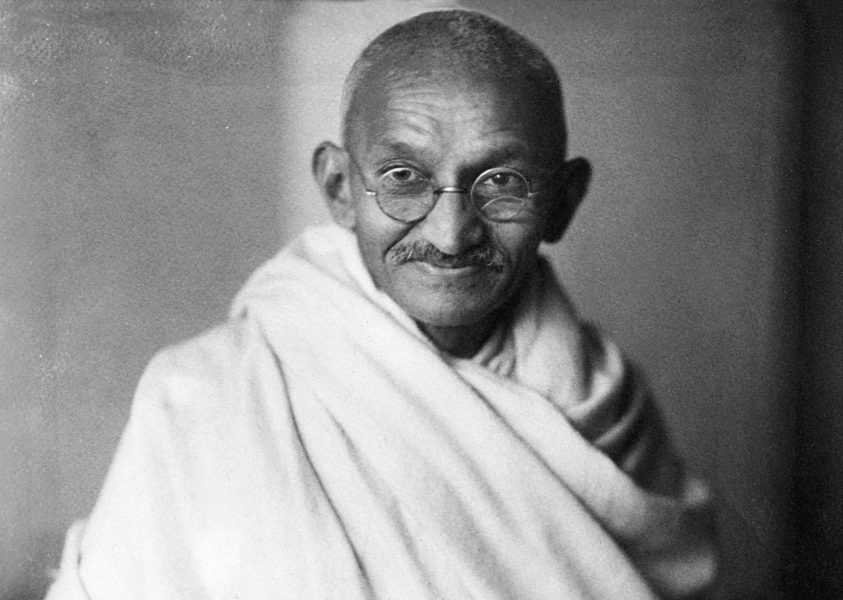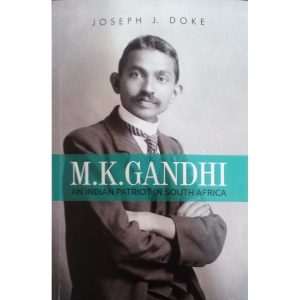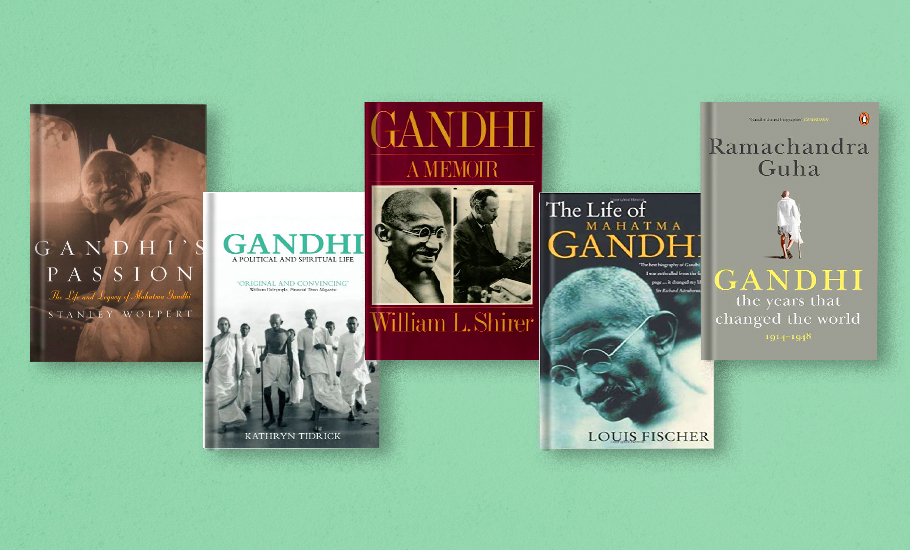
75 years after Gandhiji’s killing, what his biographies reveal about his political, spiritual life
The Federal takes a peek into six best-known biographies that chronicle the story of the Father of the Nation

On the 75th anniversary of Mahatma Gandhi’s assassination, The Federal takes a peek into six best-known biographies that chronicle the story of the Father of the Nation, his indomitable spirit and his courage of conviction, from his early days as an attorney to his elevation in the public imagination as a saint, who kindled the flame of nationalism in people and inspired a nation to triumph over the tyranny of the British Empire through non-cooperation and civil disobedience.
M.K. Gandhi: Indian Patriot in South Africa
By Joseph J. Doke
The London Indian Chronicle (1909)
Joseph J. Doke, Gandhi’s first biographer, was a political activist and a Baptist Church Minister, who had come to be closely associated with Gandhi ever since the two had met in December 1907, when Gandhi was in Johannesburg, South Africa. Doke’s biography, M. K. Gandhi; An Indian Patriot in South Africa, was first published in 1909 by The London Indian Chronicle. Ten years later, the first Indian edition was published by a Madras-based publisher GA Natesan. The book, based on Doke’s conversations with Gandhiji and others close to him at a time when he had still not acquired the status of Mahatma, carries details of Gandhi’s birth, parentage, adolescence, marriage when he was still in school, academic pursuits, and early years in South Africa. Gandhi’s fourth and youngest son, Devadas Gandhi, described it as ‘the first and perhaps the best book’ on Gandhi.

Having studied law in England, Gandhi had opened his law office in Johannesburg in 1903 at the age of 33. The city saw the birth of Satyagraha, non-violent resistance, as a form of public protest after Gandhi played a pivotal role in the resistance against Draft Asiatic Ordinance, which made it mandatory for every Asian to register their fingerprints and carry registration certificates at all times. The Asiatic community consisted of about 10,000 loyal and law-abiding people throughout the South African province of Transvaal, but the Asiatic Law Amendment Act of 1906 made them a criminal community that needed to be legislated against as criminals. After Gandhi got involved, it was repealed. Johannesburg, thus, was Gandhi’s earliest battleground to fight the mighty British empire.
Doke seems to be in awe of Gandhi throughout the book. Early on, while describing Gandhi’s role in the Asiatic resistance, he writes: “Our Indian friend lives on a higher plane than most men do. His actions, like the actions of Mary of Bethany, are often counted eccentric, and not infrequently misunderstood. Those who do not know him think there is some unworthy motive behind, some Oriental ‘slimness,’ to account for such profound unworldliness. But those who know him well are ashamed of themselves in his presence.” Doke further writes: “He is one of those outstanding characters, with whom to walk is a liberal education, whom to know is to love.” Recounting his impression of the young Gandhi, he writes: “There was a quiet assured strength about him, a greatness of heart, a transparent honesty, that attracted me at once to the Indian leader.”
The Life of Mahatma Gandhi
By Louis Fischer
Jonathan Cape (1951)
American journalist Louis Fischer, who had met Gandhi in 1942 and in 1946, claimed to know the leader well. His biography on the life and times of Gandhi, which has seen multiple reprints, introduced Gandhi to the Western readers and also formed the basis of Richard Attenborough’s 1982 film. Vividly written and well-researched, the biography encompasses the entire arc of Gandhi’s beginning and end. Gandhi’s two years and eight months in England, Fischer tells us, came at a formative phase of his life and must have shaped his personality. However, the influence of these brief years was less than normal because Gandhi was not the student type and he did not learn essential things by studying. “He was the doer, and he grew and gained knowledge through action. Books, people and conditions affected him. But the real Gandhi, the Gandhi of history, did not emerge, did not even hint of his existence in the years of schooling and study,” Fischer tells us.
When Gandhi was assassinated by Nathuram Godse on January 30, 1948, he was a “private citizen without wealth, property, official title, official post, academic distinction, scientific achievement, or artistic gift,” writes Fischer. And, yet, his death triggered sharp reaction from political leaders and the members of the intelligentsia around the world. The news was conveyed to the country by Prime Minister Jawaharlal Nehru. “The light has gone out of our lives and there is darkness everywhere and I do not quite know what to tell you and how to say it,” a shaken Nehru told the nation. “Gandhi had demonstrated,” Albert Einstein asserted, “that a powerful human following can be assembled not only through the cunning game of the usual political manoeuvres and trickeries but through the cogent example of a morally superior conduct of life. In our time of utter moral decadence he was the only statesman to stand for a higher human relationship in the political sphere.” The wave of sympathy, all unsolicited, from foreign countries, underlined that Gandhi was “a moral man, and a civilization not richly endowed with morality felt still further impoverished when the assassin’s bullets ended his life.”
Gandhi: A Memoir
By William L. Shirer
Simon & Schuster (1979 )
This was one of the first memoirs of the Mahatma that reflected not just on his accomplishments but also his frailties and foibles. American historian William Shirer had come to India to cover the rise of the Independence Movement for the Chicago Tribune at the beginning of the 1930s. He closely observed Gandhi during the launch of the Civil Disobedience Movement, the first non-violent revolution. In the book, Shirer reflects on the year he spent with Gandhi in India, drawing on his conversations with the leader. Gandhi admitted to Shirer that he could be stubborn and dictatorial since he was a human being who had his own prejudices and peculiarities, paradoxes and contradictions. or Shirer traces how Gandhi eventually rose above his prejudices.
Also read: PM Modi pays tributes to Mahatma Gandhi on death anniversary
Though Gandhi helped liberate India from the foreign yoke, his greater triumph was that he “liberated the whole world from its encrusted prejudices and foolish ways of life.” Gandhi was history’s great teacher not only by the example of his life but by what he preached and practised, writes Shirer. “In a harsh, cynical, violent and materialistic world, he taught and showed that love and truth and non-violence, ideas and ideals could be of tremendous force — greater sometimes than guns and bombs and bayonets, in achieving a little justice, decency, peace and freedom for the vast masses of suffering, downtrodden men and women who eke out an existence on this inhospitable planet,” Shirer writes in his poignant introduction to the memoir.

Gandhi’s Passion: The Life and Legacy of Mahatma Gandhi
By Stanley Wolpert
Oxford University Press (2001)
American historian and Indologist Stanley Wolpert dwells on the events of Gandhi’s life to explore the reasons behind his actions that brought freedom to India. He traces Mahatma’s journey from his childhood days in Porbandar, his stay in London and Johannesburg, his rise to power and, at last, his assassination at the hands of a Hindu Mahasabha fanatic. According to Wolpert, the trajectory of Gandhi’s life, like that of Christ, was the result of Gandhi’s “passion,” his courting of suffering as the means to reach divine truth.
Wolpert’s portrays Gandhi as “a man of inner conflicts obscured by his political genius and moral vision,” an aspect of Bapu’s persona which gets manifested as Wolpert describes Gandhi’s early campaigns to stop discrimination in South Africa and, later, his leadership of the freedom movement. Gandhi’s insistence on the primacy of love for one’s adversary in any conflict as the invincible power for change, writes Wolpert, was influenced by nonviolent teachings of Hinduism, Jainism, Christianity, and Buddhism. Gandhi’s Satyagraha and his unyielding opposition to intolerance became inspiration for world leaders like Martin Luther King, Jr. and Nelson Mandela, who demanded a better world through peaceful civil disobedience, taking a leaf out of Gandhi’s book.
Gandhi: A Political and Spiritual Life
By Kathryn Tidrick
Verso Books (2013)
In this complex and layered portrait, English historian Kathryn Tidrick focuses on how the political and the spiritual shaped Gandhi, who sought to fulfil his religious aspirations through politics and to reconcile politics with personal religious conviction. Drawing on neglected material, Tidrick delves into the paradoxes of Gandhi’s life and personality, shining light on “a man whose spiritual ideas originated not in India, but in the drawing rooms of late-Victorian England, including eccentric and damaging notions about sex.”
According to Tidrick, while Gandhi’s encounter of theosophists, esoteric Christians, vital food enthusiasts, and exponents of the simple life proved formative, his later influences included Leo Tolstoy, English philosopher John Ruskin, the American ‘New Thought’ movement, which spawned Christian Science and other forms of positive thinking. “Gandhi was the pre-ordained and potentially divine world saviour whose coming was logically implicit in the ‘ancient’, and especially ‘Eastern’, religious writings to which so many of his English acquaintances had turned in their search for a new revelation of God’s purpose in the world,” she writes.
Gandhi: The Years That Changed the World, 1914–1948
By Ramachandra Guha
Allen Lane (2018)
Ramachandra Guha presents a counterpoint to the revisionist historiography, which suggests that India would have achieved Independence from the British much earlier had it adopted the path of violent revolution. Guha traces Gandhi’s story from his days in South Africa as a young attorney to his assassination in 1948, drawing on a vast reserve of sources. We get to know how his contemporaries understood Gandhi and his travels through varied societies taught
According to Guha, the two decades that Gandhi spent in the diaspora were crucial to his intellectual and moral development. “Living outside India, he came to appreciate the enormous linguistic and religious diversity of his homeland. It was in South Africa that he forged a regimen of extreme personal austerity, experimenting with different foods and methods of healing. It was here that he first thought of, and applied, the technique of non-violent resistance known as satyagraha,” Guha writes.
While Gandhi’s years in South Africa were important to him personally, it was his years in India that were of far greater historic import, underlines Guha: “In South Africa, he sought to represent the Indian diaspora, roughly 1,50,000 people in all. In his homeland, he strove to become the leader of its 300 million people. In South Africa, he worked only in towns and districts where Indians were present; in India, he made his ideas known in every corner of the subcontinent. In one place, he led a relatively small community of migrants; in the other, he became the central figure in the largest colony of the world’s greatest Empire.”


